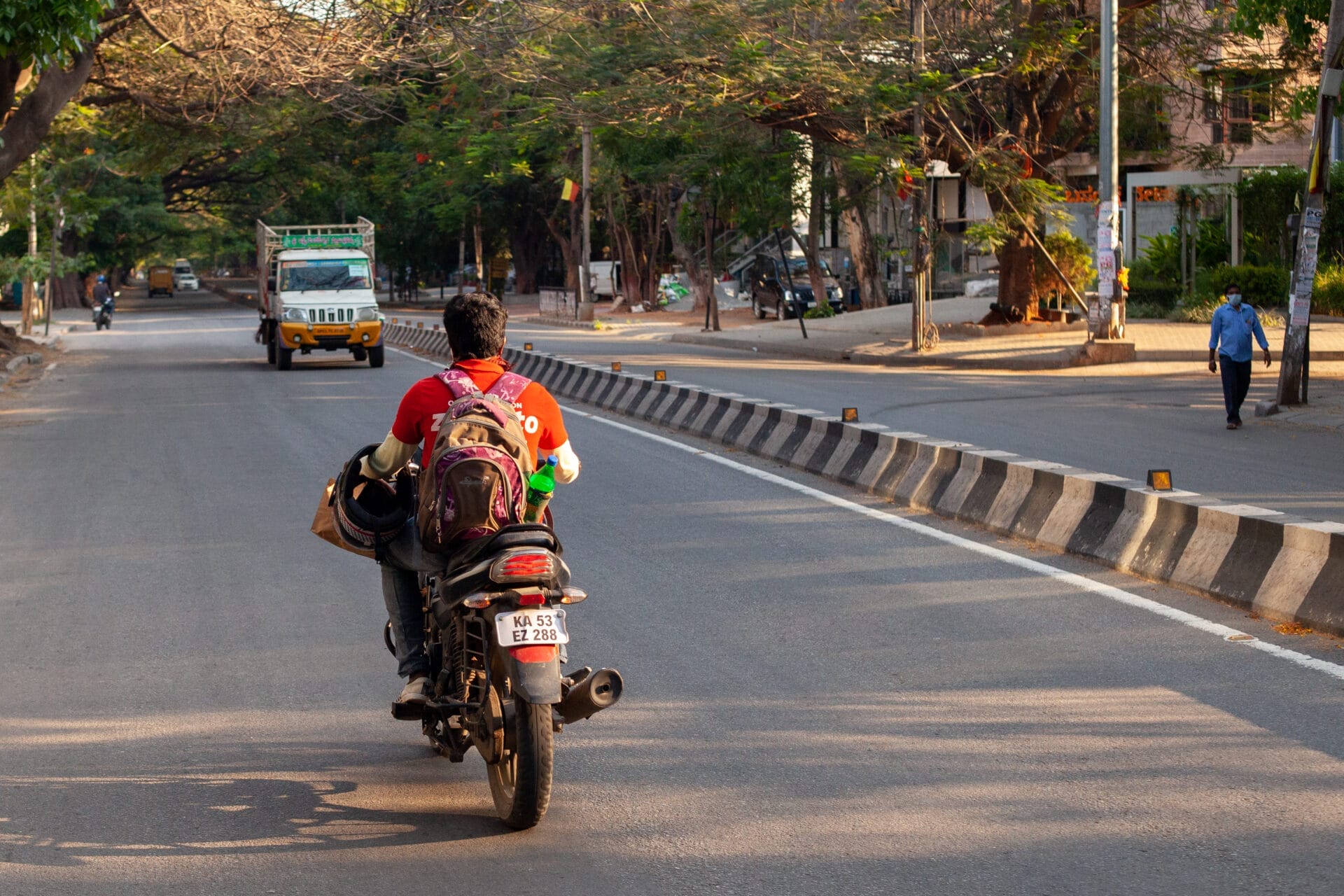This year has seen a scorching and extended summer all across the country. Tamil Nadu has been no different with the state capital, Chennai, recording 40.7 degrees Celsius in the peak of summer. As temperatures soared, the Greater Chennai Corporation issued an advisory, asking people not to step out of their homes between noon and 3 pm, and to cover their heads to protect themselves from the unbearable heat.

But what if your job requires you to spend several hours out in the sun during peak hours of heat? And the humidity only makes it worse.
To avoid going out in the sun or even in the rain, many of us tend to order food or essential items through online platforms. On the other end, there is a human who is not only beating Chennai traffic but also braving extreme weather conditions (be it heat or rain) to provide the things we want at our doorsteps. These are gig workers working for various delivery platforms, who ride around 150 km a day with meagre incentive or recognition.
Heat impact on gig workers
To understand their side of the story, we spoke to a few gig workers and also experts. In the video below, they talk about their experience of the heatwave and how they handle extreme weather conditions.
Read more: Life on the go: Meet your Swiggy delivery person
Meanwhile, Chennai is the second Indian city to get a Climate Action Plan aligned with the Paris Agreement. Chennai also has a heat action plan. Although it does not specifically mention gig workers, it identifies outdoor workers as high-risk groups. However, there is little evidence of the execution of these plans. What do we have to do at the policy level to ensure the safety of the gig workers?
Policy for the protection of gig workers

On August 15, 2023, Tamil Nadu Chief Minister MK Stalin, announced the formation of a welfare board for the gig workers that would provide them with social security. This is called the Tamil Nadu Platform-Based Gig Workers Welfare Board. The scheme was rolled out by the end of December 2023. According to this, the gig workers are qualified for any provisions given to the manual workers as per the Tamil Nadu Manual Workers (Regulation of Employment and Conditions of Work) Act, 1982 (Tamil Nadu Act 33 of 1982).
However, a recent news report points out that only one gig worker has registered on the board so far, while around 1.5 lakh workers were expected to join the board. The welfare board looks like a positive move, but the gig workers and the trade unionists say there are several issues with it.
For one, the government says that the manual workers are those, who do not have a direct employee, whereas the platform-based gig workers do have a direct employee. By bringing them under the Tamil Nadu Manual Workers (Regulation of Employment and Conditions of Work) Act, 1982 (Tamil Nadu Act 33 of 1982), the government has given a free pass to those employers.
For the 1.5 lakh gig workers in the city, being out in the blistering heat risking their health, is the only way to earn their livelihood. But, it is for the government to ensure that they get some relief and are able to manage the conditions with some assistance.